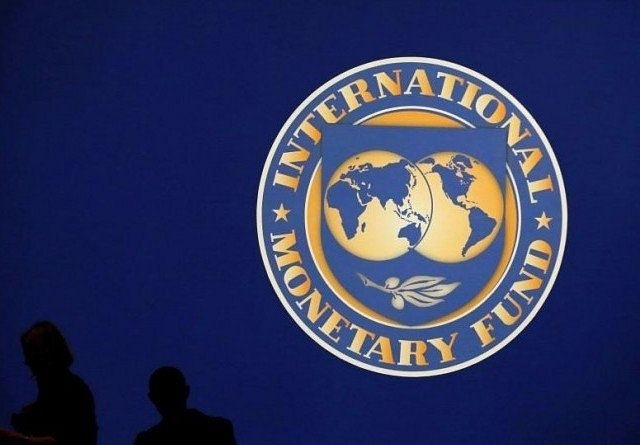Economy
IMF Sees India As One Of The Fastest Growing Major Economies Amid Coronavirus Fallout
- The growth figures for the current financial year imply that India will be the fastest growing economy as most economies experience a contraction.
- However, it projects China as the fastest growing major economy in 2021.

IMF Headquarters
The International Monetary Fund (IMF) released its world economic outlook report on Tuesday which predicts that the global economy will contract sharply by – 3 per cent in 2020. It also projects a growth rate of 5.8 per cent in 2021 as economic activity normalises.
For India, it projects a growth rate of 1.9 per cent in financial year (FY) 2020-21 and 7.2 per cent in FY 2021-22 while for China it expects the growth to be 1.2 per cent in the current year while 9.2 in 2021.
The forecast for 2021 is contingent on the assumption that the pandemic fades in the second half of 2020 and containment efforts can be gradually unwounded. They acknowledge that there is significant uncertainty at the time of this forecast as the most potent tool against the pandemic is of social distancing which has severe implications for economic growth across the world.
The growth figures for the current financial year imply that India will be the fastest growing economy as most economies experience a contraction. However, it projects China as the fastest growing major economy in 2021.
The growth forecast of 9.2 per cent for China in the coming financial year is indeed too optimistic and perhaps, it will be revised going forward.
But the key issue is of India’s growth rate in the current financial year which is close to Goldman’s forecast of growth at 1.5 per cent. It is very likely that growth will be low in the current financial year, lower than what it was in the previous financial year.
This makes it important to put forth some facts; fact 1; the Indian economy witnessed a sharp slowdown from second quarter of FY 2018-19. Fact 2; Indian economy started recovering from third quarter onwards as economic activity gradually picked up and it slightly improved until February. It is precisely when our recovery was underway that the Covid-19 pandemic hit us.
So, what happens in such a case is that the bottom of the economy – or the lowest possible growth rate that can be achieved reduces.
On the other hand, the bottom gets extended, that is, we will be at a low growth rate for a few more quarters before we gradually move closer to our potential. Both these are going to happen and growth in the first quarter of the current financial year could well be negative.
At the moment, I would not speculate on the magnitude of the growth estimates without a thorough assessment of the extent of economic disruption that has happened.
The key question that is in front of us is whether growth could well be as low as 1.9 per cent as projected by the IMF and the answer to that is yes, it is possible. But, an equally important fact worth remembering is that the current financial year will witness at least a month of limited economic activity taking place due to the lockdown.
Many have questions regarding the future of their businesses, the extent of the policy support which will be made available and the future market conditions once lockdown is lifted.
Unfortunately, there are no answers to these questions right now.
However, what we do know is that China indeed managed a swift recovery and if that trend indeed continues, then the recovery could be faster.
Alternatively, there’s always the possibility of growth even being lower, than being projected by the IMF.
The operative assumption here in the IMF’s world economic outlook report is that there won’t be significant long-term implications of Covid-19 on economies and that their potential rate of growth will continue to be the same.
One of the reasons why this assumption appears to be reasonable is because governments have indeed acted boldly and swiftly to insulate their economies from some of the possible fallout of the pandemic, which could result in structurally lower levels of growth rate.
Therefore, the key here is the policy response which is more relevant for India which was already experiencing a sharp slowdown. Getting the policy response right in terms of size and scale will determine whether Covid-19 has an impact on our potential growth rate along with the pace of our recovery during the second half of our financial year.
We have imposed one of the strictest social distancing measures in the form of a complete lockdown, consequently, we now need to prepare for a sizable fiscal-monetary operation to contain its economic fallout.
Introducing ElectionsHQ + 50 Ground Reports Project
The 2024 elections might seem easy to guess, but there are some important questions that shouldn't be missed.
Do freebies still sway voters? Do people prioritise infrastructure when voting? How will Punjab vote?
The answers to these questions provide great insights into where we, as a country, are headed in the years to come.
Swarajya is starting a project with an aim to do 50 solid ground stories and a smart commentary service on WhatsApp, a one-of-a-kind. We'd love your support during this election season.
Click below to contribute.
Latest